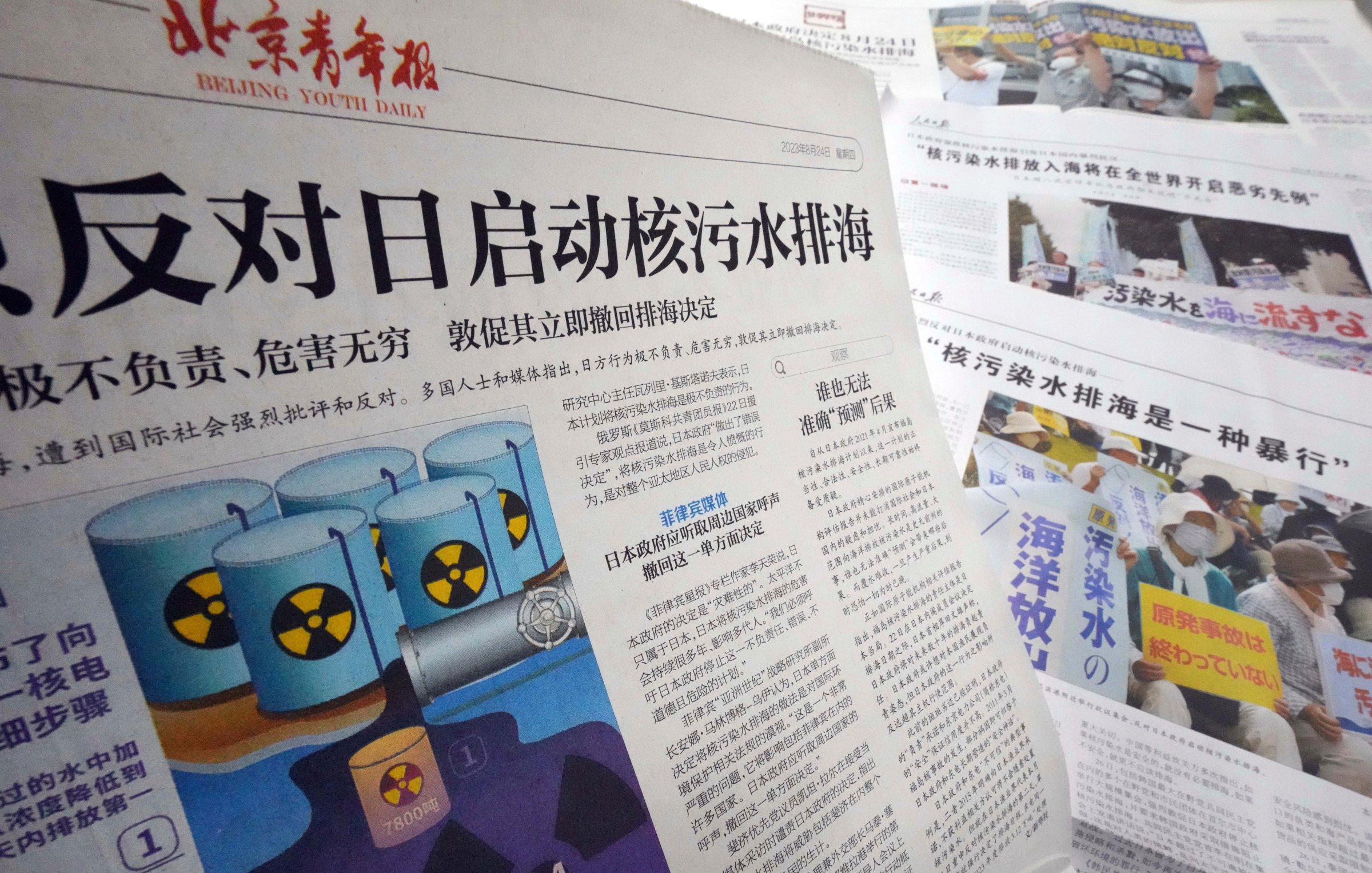
Have you considered that “man-tall crabs” or “Cthulu-esque octopuses” could emerge from the sea in 30 to 40 years? China is apparently upset that Japan hasn’t, according to a recent state media report.
In the last two weeks since Japan began releasing into the Pacific Ocean treated wastewater that had been used to cool the Fukushima Daiichi nuclear power plant that was damaged by a tsunami in 2011, a seemingly coordinated campaign has been waged on social media and Chinese news media to vent outrage and hysteria about the dangers of radiation imposed by China’s neighbor to the east.
China isn’t the only critic of Japan’s discharge, but it is perhaps the loudest. China’s foreign ministry called Japan “a saboteur of the ecological system and polluter of the global marine environment.” And Chinese customs authorities banned all aquatic products coming from Japan since the wastewater release began on Aug. 24, despite being the biggest market for Japanese seafood exports before then. Reports of harassment of Japanese citizens in China soon followed.
In reality, most scientists agree that the health effects of the wastewater on the marine environment and consumers of seafood from the region are negligible. Some observers have even pointed out that similar discharges have been occurring for years by operators of nuclear power plants across the world—including in China.
After nuclear wastewater is treated, including the water released by Japan, typically what radioactive elements remain are tritium (a hydrogen isotope) and carbon-14, which are both already abundant in nature. The water is then diluted to an acceptable limit so as not to be harmful, though there is no common international standard. It’s then common practice to dispose of the treated water by releasing it into the ocean. TEPCO, the operator of the Fukushima plant, dilutes wastewater to a radioactivity of around 15% the World Health Organization’s maximum level for drinking water.
TEPCO has pledged to release no more than 22 trillion becquerels—a unit of emitted radiation—of tritium per year. For reference, the Diablo Canyon Power Plant in California released liquid effluents containing around 95 trillion becquerels of tritium in 2022, and the Heysham B Power Station in England released about 396 trillion becquerels of tritium in 2019.
While the U.S. and the U.K. have supported Japan’s release plan as safe, as has the International Atomic Energy Agency, China has pressed forward with demonizing Japan. At the same time, the latest China Nuclear Energy Yearbook by the nonprofit non-governmental organization China Nuclear Energy Association shows that plants there have discharged water with much higher radioactivity levels in 2021, the last year for which data are available.
Not all of the numbers are decipherable, but at least 10 nuclear plants in China in just a year discharged liquid effluents containing more than 4.5 quadrillion becquerels of tritium—more than 200 times the self-imposed annual limit for Fukushima’s wastewater release.
When presented with charges of hypocrisy earlier this summer, Chinese officials denied that the situations are comparable. “In fact, there are essential differences between the nuclear-contaminated water from the Fukushima nuclear power plant in Japan and the normal liquid effluents from nuclear power plants worldwide,” the National Nuclear Safety Administration said in a statement. Foreign ministry spokesperson Wang Wenbin also said during an August press briefing that “there is a fundamental difference between the nuclear-contaminated water that came into direct contact with the melted reactor cores in the Fukushima nuclear disaster and the water released by nuclear power plants in normal operation.”
That’s not necessarily true. A range of different radioactive isotopes can be present in nuclear wastewater before its treated, but after treatment, the ultimate risk posed by the tritium that remains is not actually affected by how the water was originally contaminated, says Jim Smith, a professor of environmental science at the University of Portsmouth who has extensively studied the impact of radioactive pollutants on the environment. “Basically, it's all been through reactors, or at least the tritium has come from reactors, and the other radionuclides come from reactors,” he tells TIME, “so I don't really see a difference.”
But if not for a legitimate concern for health and science, why else might Beijing be so determined to paint Japan as a villain? Some have speculated that the wastewater issue offers a politically convenient distraction for China, which is facing domestic turmoil—giving citizens something else to be angry about instead of the unexpectedly slow economic growth, record-high youth unemployment, dwindling resources for an aging public, and a real estate sector in crisis. China has already had an historically fractured relationship with Japan due to the latter’s past colonial rule of the former. And just this year, as the geopolitical rivalry between the U.S. and China has continued to intensify, Tokyo has strengthened its military partnership with Washington.
China’s state media has even reckoned with questions about why it cares so much about this issue. “Some U.S. media outlets even claimed that China would be the last to be affected from the perspective of ocean circulation. So why is China stepping up?,” an anonymous source quoted in the Global Times asked, before credulously answering: “Because what China has been doing is for the sake of being responsible to humanity and the country really cares about environmental protection.”
—Koh Ewe contributed reporting.
More Must-Reads From TIME
- The 100 Most Influential People of 2024
- Coco Gauff Is Playing for Herself Now
- Scenes From Pro-Palestinian Encampments Across U.S. Universities
- 6 Compliments That Land Every Time
- If You're Dating Right Now , You're Brave: Column
- The AI That Could Heal a Divided Internet
- Fallout Is a Brilliant Model for the Future of Video Game Adaptations
- Want Weekly Recs on What to Watch, Read, and More? Sign Up for Worth Your Time
Contact us at letters@time.com